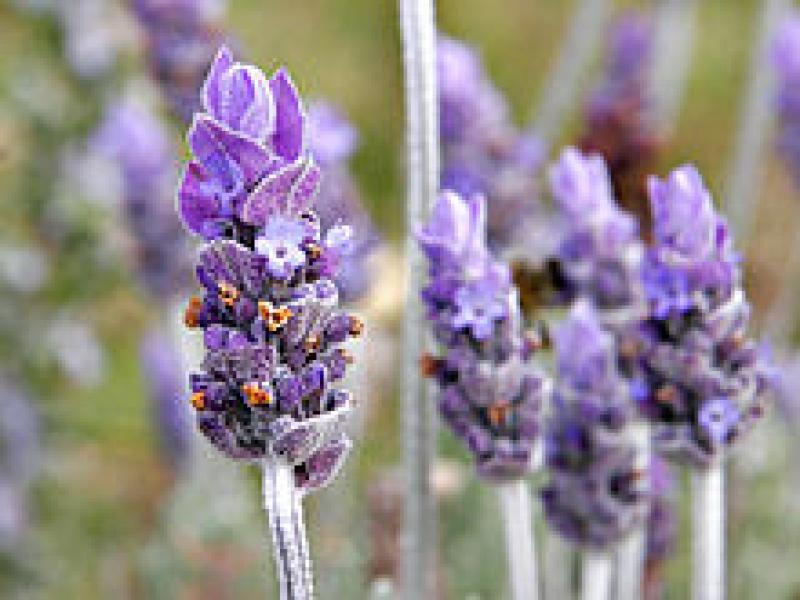You smell like a stinkbug

While maybe not the best compliment I have ever received, other entomologists will sometimes tell me I smell like a stinkbug. They know what stinkbugs smell like, and they assume I smell the way I do because I have been around them. Actually, I rarely visit the stinkbug colony (I work with aphids!), but sometimes I use an essential oil blend that contains an herb (cilantro) that many say smells just like a stinkbug!1
Essential oils are used in aromatherapy, which is the practice of using concentrated plant oils for treatment or therapy2. Frequently, the oils are inhaled to produce the desired effect, but they can also be applied topically or ingested (for certain oils)2. Essential oils are used for their antimicrobial properties and for various health benefits including improving sleep disorders, stress relief and muscle tension2–4. However, it should also be noted that sometimes essential oils can cause adverse or no effects. It can also be difficult to evaluate the efficacy and claims of essential oils because proper quality controls (such as noting plant species or purity of the oil) are often omitted from peer-reviewed studies3–5. Overall, more studies are needed to better understand the potential role for essential oils in modern medicine.
Here are a few common essential oils and their uses:

Lavender2,4,5. Lavender is probably the most well studied essential oil, probably because it is so versatile. Lavender has many reported benefits, including relaxation and better sleep, as well as promoting an elevated mood. Lavender can also be used for pain and stress relief, and it has antimicrobial properties. Interestingly, different species of lavender can have different effects. For example, Lavendula latifolia acts as a stimulant, while L. angustifolia is a relaxant. (Image from en.wikipedia.org)

Bergamont3. Citrus bergamia (bergamont) is a citrus hybrid between bitter orange and lemon. The bergamont essential oil is derived from the fruit peel, which is used in perfumes, the pharmaceutical industry and in food products. In fact, bergamont is the hint of citrus that is tasted in Earl Grey Tea! In aromatherapy, bergamont is used to relieve stress and chronic pain. It should also be noted that, like other citrus essential oils, topical application of bergamont can cause increased skin sensitivity to UV rays. (Image from farmersalmanac.com)
Peppermint2,6. There are many uses for peppermint (Mentha piperita) leaves and essential oil. The leaves are used in teas and as food flavoring. The oils are sometimes ingested in capsules for relief from irritable bowel syndrome (IBS). Peppermint can also be applied topically to relive itching, and when applied to the temples, can soothe headaches. Menthol is the main component of peppermint oil and is responsible for the pharmacological benefits. (Image from britannica.com)
I use essential oils for relief from muscle tension and headaches. I also use them as a mood booster, or for relaxation and falling asleep. If you are interested in using essential oils, I recommend following the specific safety recommendations outlined for every oil, because not all oils are used the same way.
And while most essential oils smell absolutely wonderful, there’s a chance that you could end up smelling like a stinkbug, too.
Written by TPS Fellow Ashley Yates-Stewart
References:
1. Schweber, N. Bad News Stink Bug (But Don’t Smash It). The New York Times (2007).
2. Ali, B. et al. Essential oils used in aromatherapy: A systemic review. Asian Pacific Journal of Tropical Biomedicine 5, 601–611 (2015).
3. Navarra, M., Mannucci, C., Delbò, M. & Calapai, G. Citrus bergamia essential oil: from basic research to clinical application. Front. Pharmacol. 6, (2015).
4. Lakhan, S. E., Sheafer, H. & Tepper, D. The Effectiveness of Aromatherapy in Reducing Pain: A Systematic Review and Meta-Analysis. Pain Research and Treatment 2016, 1–13 (2016).
5. Lillehei, A. S. & Halcon, L. L. A Systematic Review of the Effect of Inhaled Essential Oils on Sleep. The Journal of Alternative and Complementary Medicine 20, 441–451 (2014).
6. Peppermint oil. National Institutes of Health (2016).
